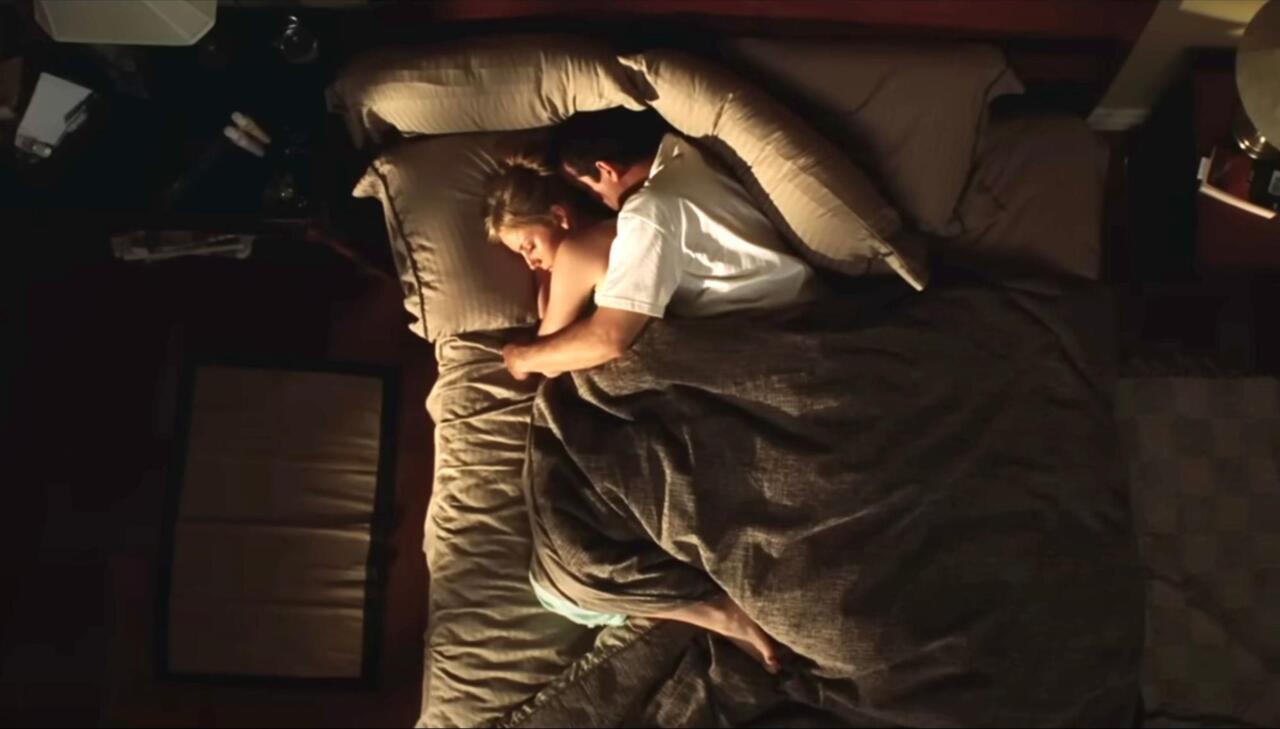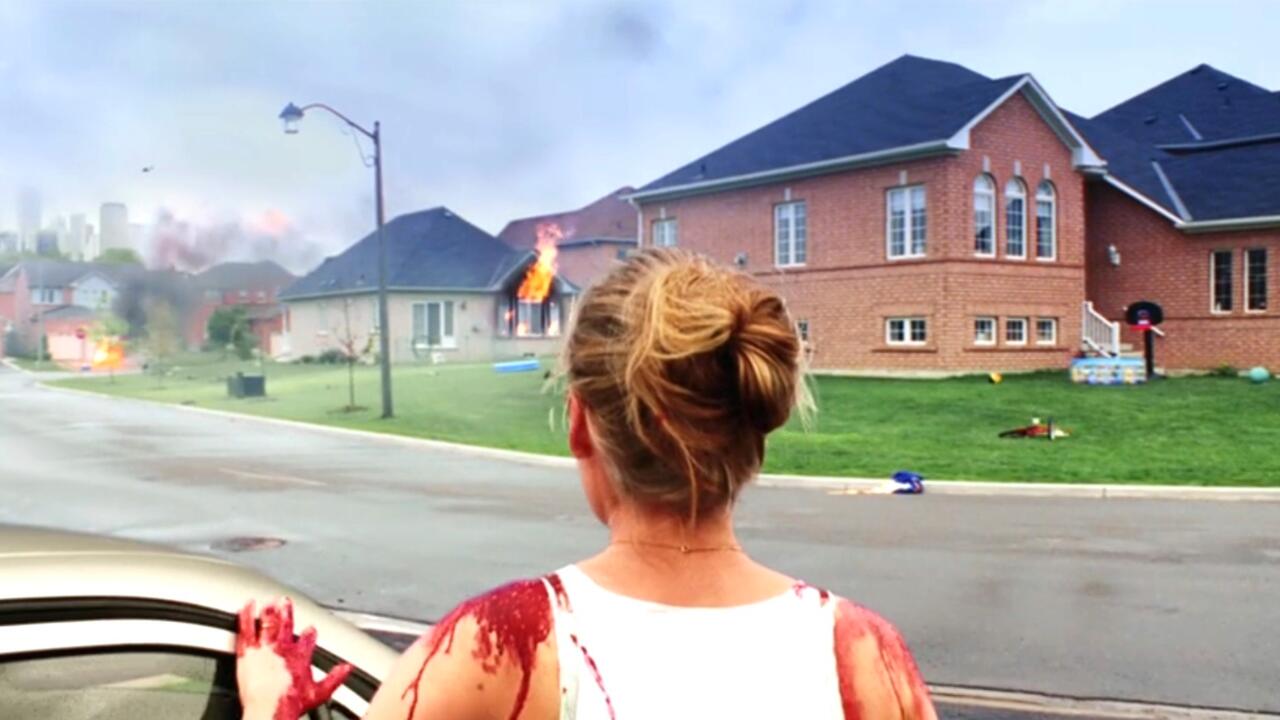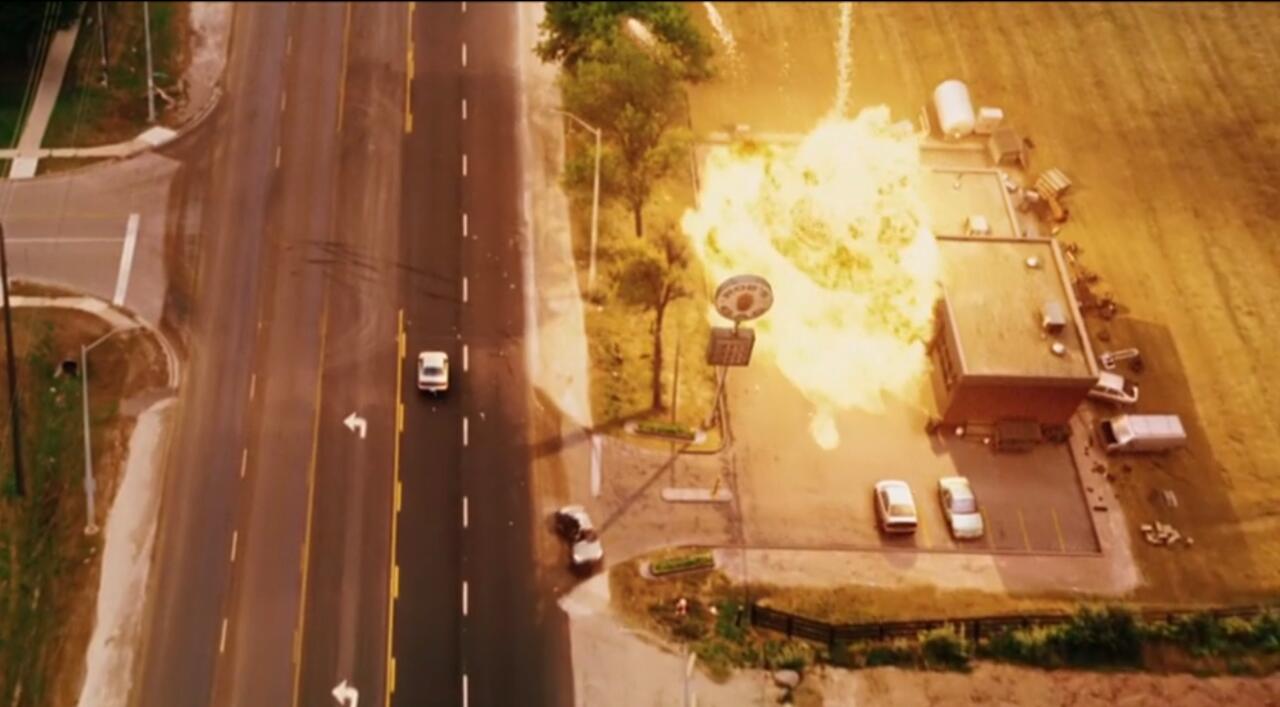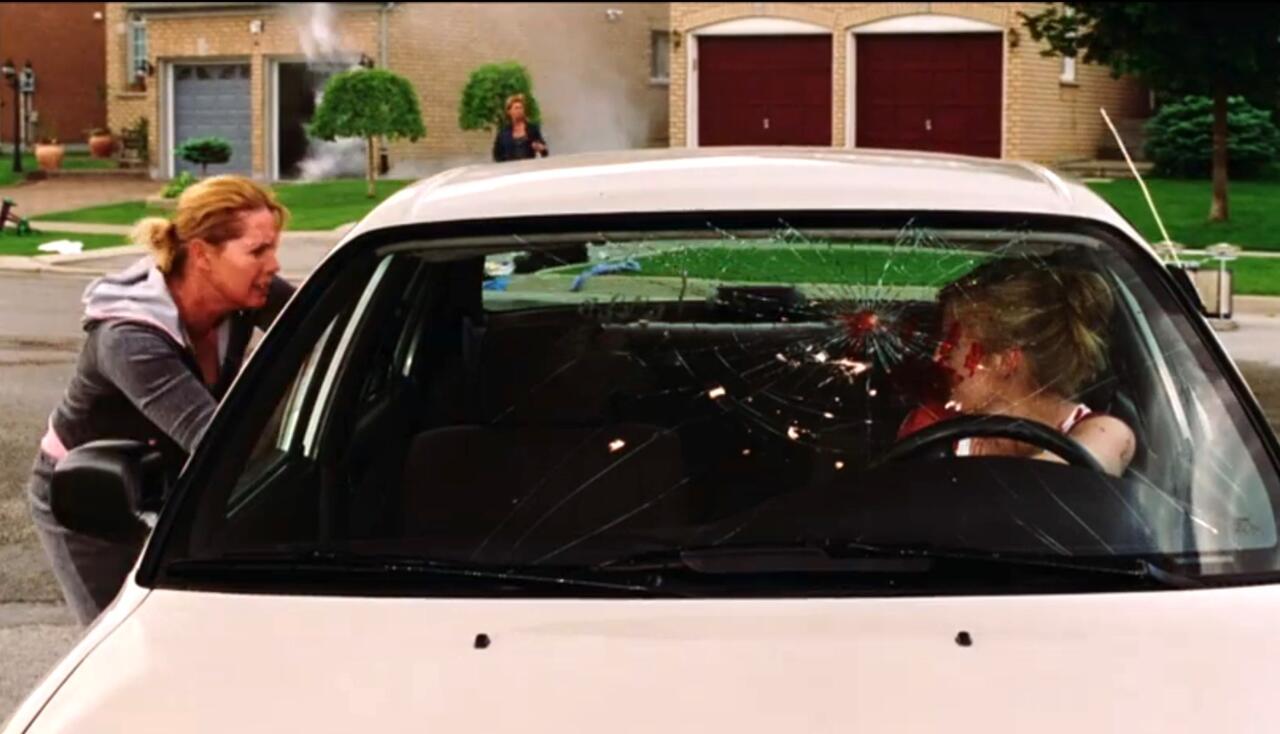The 2004 Dawn of the Dead remake, written by James Gunn and directed by Zack Snyder (in his directorial debut!), celebrates its 20th anniversary this week. Both critically praised and commercially successful at the time of its release, the film, along with 28 Days Later, helped popularize the concept of sprinting zombies over their shambling, slouching, Romero-made counterparts. They created panic and urgency, and they made for an opening sequence that was worth the price of admission by itself.
Like many great horror films, Dawn of the Dead doesn’t start with horror. Our main character, Ana, is a nurse, and she’s wrapping up a long shift at the hospital. What’s great about this opening sequence–of her talking with co-workers and killing time–is how mundane it is. This is not load-bearing dialogue, and the actors don’t deliver it theatrically, as if to imply narrative stakes. We know that Ana is about to have the worst day of her life. But she doesn’t know that. Nothing feels urgent or pressing, because from her perspective, it isn’t.

She doesn’t know it’s the last time she’s going to see her co-worker, or the neighborhood girl, or her husband. Even the shower sex between them, tastefully filmed behind the steaming glass, feels domestic and perfunctory.
The neighborhood also looks perfect–a little too perfect. The ground is spotless, the lawns are immaculate, and the colors are a little too bright and saturated. It’s an old trick that lots of horror and thriller movies use. In Blue Velvet, David Lynch filmed the neighborhood of Lumberton in this manner to communicate its falsehood–that beneath the surface, there is a rot and evil.

The manicured nature of Ana’s life prompts the viewer to consider the suddenness with which life can go completely, irreversibly to shit. There’s no warning–it simply happens, with no chance for closure or to say goodbye. Instead, you just have to react and, hopefully, survive.
With enough attention paid, we can tell something terrible is unfolding. A patient at Ana’s hospital is likely a zombie victim. We hear bits of an emergency broadcast on the radio and television, although, of course, our characters don’t pay enough mind to it. This particular element is borrowed from the original Night of the Living Dead (1968), in which we heard about the zombie epidemic via radio–first in Barbara’s car, and later in the barricaded house.
Then the shit hits the fan–not in the middle of the night, like a more typical horror movie might have done, but in the wee hours of the morning. There’s something unseemly about getting one’s throat torn out before breakfast.


The neighborhood girl tears a hole in the husband’s neck, he bleeds out, and Ana goes into professional nurse mode–she tries to staunch the bleeding, and she gets on the phone to dial 911. Neither works, and in a matter of seconds, her husband’s corpse reanimates and attacks her.
The scene communicates several key points through staging and non-verbal communication. First, we get a rudimentary idea of how the zombies in this universe work. You get attacked, you die, you come back. Second, Ana realizes her training will have limited practicality. And third, she needs to divorce herself of emotional attachments. This is not a scenario where she has time to grieve or seek closure. She needs to kill or be killed. Everyone has been reduced to an animal state; the zombies are the predators, and the uninfected are the prey.


Then Ana goes outside, and everything she sees reinforces the prior points. A neighbor points a gun at her before he’s hit by an out-of-control ambulance. (How’s that for irony?) This is a world where panic will kill people as easily as the zombies. We see a gas station blow up, which has all sorts of long-term implications. The infrastructure of this world is quickly coming undone, which will affect people’s ability to contact and reach each other.


And Ana’s a quick learner–a woman asks for help, and she drives on by. She can’t trust anyone. And when a man attempts to steal the car, it only underlines this idea. Not only can she not help other people, but she has to worry whether those people are openly hostile.


In the ensuing scuffle, she loses control of her car and crashes into a tree. The screen goes black. And what ensues is one of the finest opening credits scenes of the last 20 years.
The song, for starters, is “The Man Comes Around,” by Johnny Cash. It’s the first track on American IV, the final album that Cash released in his lifetime, and his final masterpiece. The recording sessions were marked by morbidity. Cash was dying slowly; he was mostly blind, and diabetic neuropathy and pneumonia had ravaged his body.
His voice, one of the strongest in country music, had been diminished to a shaky rasp. Covers and traditional Americana made up the bulk of the album, but “The Man Comes Around” was the lone original song written by Cash, inspired by the Book of Revelation. It is a terrifying song, written by someone who knows the end is near. But despite its morbidity, it still has the rhythmic back beat that often defined Cash’s career. It’s a hell of a juxtaposition. And it communicated something subliminally: We’re about to watch a movie that’s horrifying, but a whole lot of fun.
The images that play over the music are a combination of original zombie footage and real-life footage of riots and urban warfare, and they’re edited together so seamlessly that you’re not entirely sure where one ends and the other begins. This strikes at the principal fear that contextualizes all zombie media: It’s your neighbors, your loved ones, and your fellow citizens who are the monsters. And this blurring, between what’s fake and real, makes it plain that humanity’s savagery is closer to the surface than we’d care to admit.


Romero, despite liking the remake overall, criticized the film in several interviews after its release. “… It sort of lost its reason for being,” said Romero in an interview with Uproxx. But there’s one thing that Romero and nearly every horror fan agreed upon. The first 10-15 minutes–from the opening scene at the hospital to the conclusion of the opening credits–are near-perfect. They throw you into a state of confusion and excitement for what’s to come. Then they ground a ridiculous premise in reality, by seamlessly editing news footage and zombie footage together over an upbeat Johnny Cash tune. It’s the end of the world. But we’re going out with a bang.





















+ There are no comments
Add yours